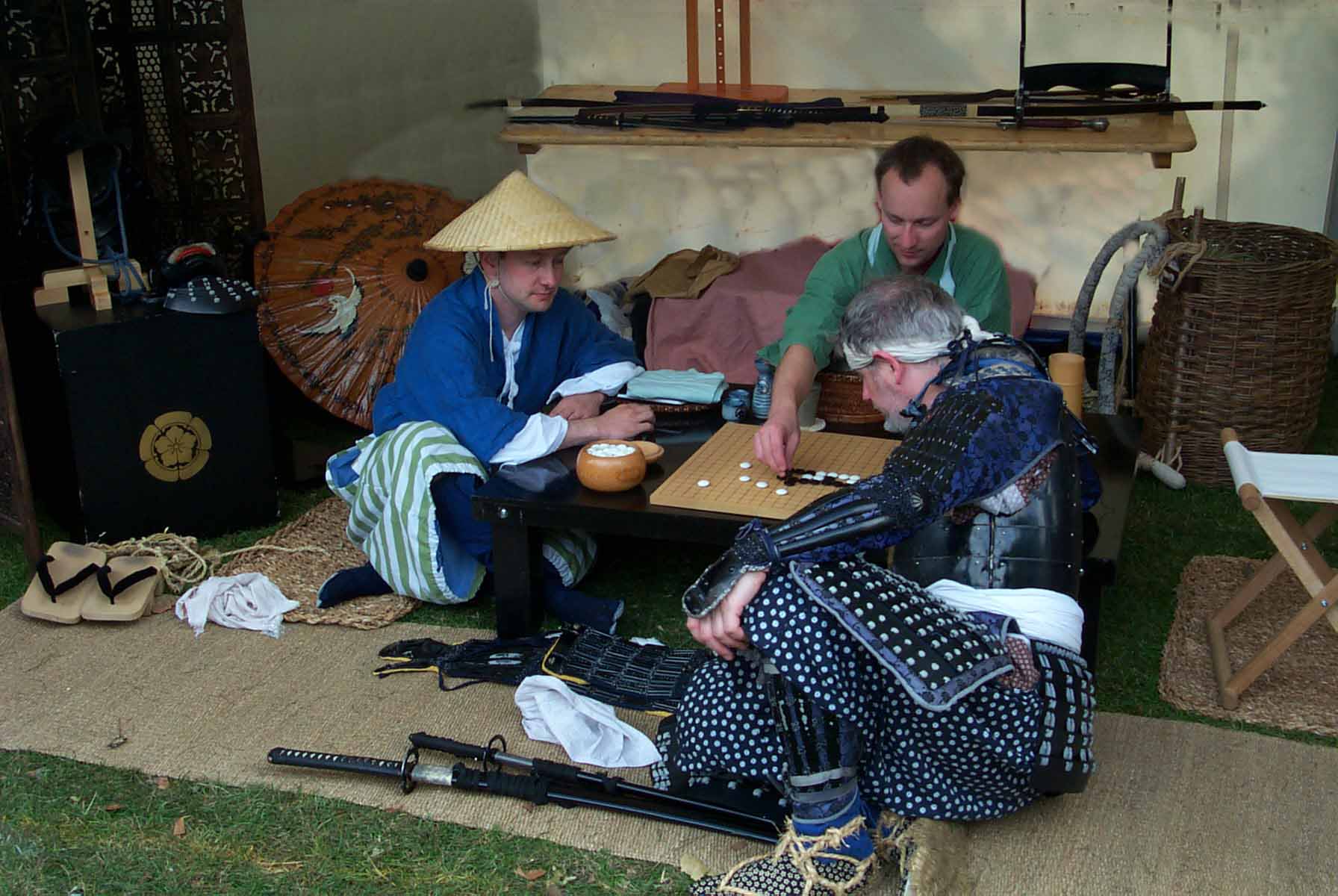Will Adams Festival 2004
See the caption below the image|
七 転 び 八 起 き |

|
|---|
|
This photo was taken at our tiny display at the "Will
Adams Festival", in Gillingham kent in September 2004.
At left in KANJI & HIRAGANA script is the group's motto, an old Japanese proverb: "NANA KOROBI YA OKI", which translates as "7 falls, 8 rises". This is their equivalent to the english "if at first you do not succeed, try, try and try again". However, as one of our members put it slightly differently, "we're too stupid to know when to quit", being a reference to the immense difficulty involved in putting the project together At right is the same picture as appears on our front page, but with an expanded description: at left wearing the KASA or TAKE-GASA ("bamboo hat") is Simon Anderson, better known to his friends as "Parkway", while in the centre straightening the pieces on the board is Andrew Mellor, a very fine swordsman. Both are wearing KOSODE, a "small sleave" type of KIMONO, plus KOBAKAMA "small" knee length working/fighting "trousers", an OBI or cloth belt, and KYAHAN gaiters around their lower legs. These garments being the typical clothing of the warriors of the era when on campaign. Finally in the armour is myself, Dean Wayland, directing the start of a game of "GO", a seemingly simple strategy game. The armour is a modern Japanese all steel replica in the TOSEI GUSOKU style meaning a "modern suit" circa 1550 onwards, its black carrying box (YOROI-BITSU) can be seen at the far left. The armour has an OKEGAWA-DOU or "barrel shaped body". The KOTE or "sleaves" are of SHINO- GOTE style, that is steel "splints and mail" sewn to a textile base, as are the SUNEATE or "shin guards". The HAIDATE or "thigh guard" is of TATE style, "shields" or plate scales. Japanese armour is rendered flexible by the use of silk, leather or as in this case pale blue cotton lacing. In front of the table are another pair of KOTE, belonging to Andrew, which are of far heavier and superior make. At the far left can be seen a pair of GETA, or wooden pattern/clog type footwear, where as I can be seen wearing TABI, "sox" and WARAJI "straw sandals", the typical footwear of the period. At the back of the table you can also see a SAKE set, the short bottle and small cups, although for this event it did not contain rice wine (SAKE) but water. In the foreground you can also see a pair of swords, the set being known as a DAISHO meaning "big-small". These are the long and short swords called KATANA and WAKIZASHI. Lying along the back is a 7 foot long YUMI or bow and a wicker work rucksack (far right). |
Click image to return to Gallery